Fruits and Veggies
Date: Wednesday, March 03, 2021Maintaining a healthy weight doesn't have to be a struggle.
Maintaining a healthy weight doesn’t have to be a struggle. You can enjoy the same amount of food with fewer calories by simply replacing high-calorie ingredients with fruit and vegetables. The water and fibre they contain add volume to your meals and fill you up more easily. As they are also rich in nutrients vital to our body’s functions, fruit and veggies are indispensable to our health.
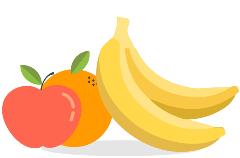 commonly eaten fruits | 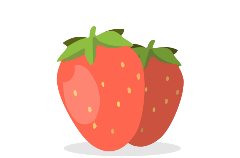 Berries | 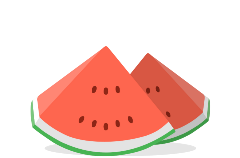 Melons |  100% juices |
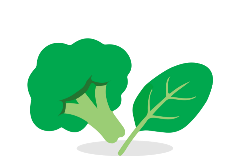 Dark green vegetables | 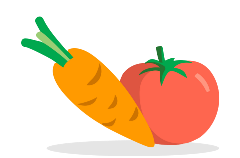 Red and orange vegetables | 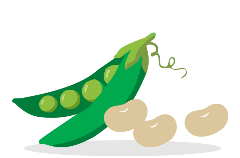 Beans and peas |  Others |
DID YOU KNOW
The nutritious bits are in the peel! Pick whole fruit over fruit juices to get the best of their nutrients and fibre.
Why should we eat fruit and vegetables?
Naturally low in fat, calories and sodium, fruit and vegetables boast a range of essential vitamins and minerals. A diet rich in fruit and vegetables keeps us in tip-top shape.
| Nutrient | Benefits |
|---|---|
| Potassium |
|
| Dietary fibre* |
|
| Folate (folic acid) | Helps body form red blood cells |
| Vitamin C |
|
| Vitamin A** |
|
* Not applicable to fruit juice ** Found mostly in vegetables
Eat an abundant variety of fruit and vegetables
The 2 + 2
Everybody should eat 2 servings of fruit and 2 servings of vegetables per day. Starchy or root vegetables like potatoes and corn do not count towards the 2 + 2 servings as they are starchy and are more like rice or bread.
So what does one serving of fruit or vegetables look like?
One serving of fruit 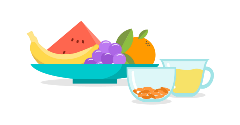 | One serving of vegetables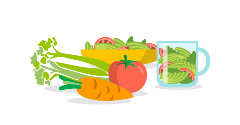 |
|
|
+ 250 ml ^ 25 cm plate
Eat a rainbow of fruit and vegetables
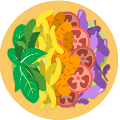 | Fruit and vegetables offer unique health benefits, including protection from diseases like heart disease or cancer. Treat yourself to the full spectrum of nature’s bounty for maximum benefits. |

DID YOU KNOW
Be sure to stock up on frozen fruit and vegetables, or canned and dried produce labelled with the Healthier Choice Symbol (HCS) in case your fresh supplies run out. These options are also nutritious and offer added variety to your diet.
Cut calorie intake with fruit and veggies!
Add fruit and vegetables to fill you up
| BREAKFAST | |
 | Less cereal, more fruit Cut back on the cereal and make room for delicious fruit like banana slices and blueberries. Now your breakfast boasts fewer calories and better taste. |
 | Complete your meal with fruit This can be sliced fruit or a glass of fresh fruit juice. |
| LUNCH | |
 | Have a salad as a main dish Remember to pick a healthier salad dressing e.g. a balsamic vinaigrette. Creamy dressings generally pack more calories and sodium than non-creamy ones. |
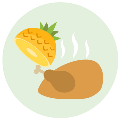 | Include vegetables or even fruit in your meat dishes Instead of simply meat dishes, mix in vegetables for an extra-filling meal with extra vitamins and minerals. Adding fruit also makes for healthy, tasty dishes. Pineapples go well with sweet and sour dishes, while mangoes taste great with chicken. |
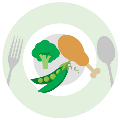 | Include vegetables in your economy rice meal Be sure to ask for 2 vegetable sides and 1 meat option. |
 | Enjoy fresh cut fruit or frozen fruit for dessert Treat yourself to sweet healthy fruits instead of sugar-laden, high-calorie options like ice kachang. Try freezing grapes, orange wedges, banana pieces, or watermelon for a cool tasty dessert. |
| DINNER | |
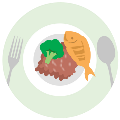 | Build a meal around a vegetable main dish Make options like stir-fried vegetables your main dish, and then add other foods to complement it. |
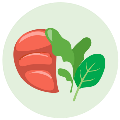 | Order at least 2 vegetable dishes when eating out The fibre in vegetables helps you feel full after a meal, curbing overeating or snacking. |
 | Eat a green salad as often as you can If you haven’t eaten veggies for the whole day, a salad at night will do the trick. |
Snack on fruit and Vegetables
Be it fresh, frozen, dried or packaged, fruit and vegetables are healthier treats than the usual high-calorie offerings.
| Fresh Fruit | |
 | You can keep a bowl of apples, bananas or other whole fruits within reach. For example, on your desk when you are working. |
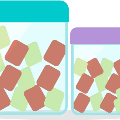 | Having a container of pre-cut fruit in the fridge or freezer also helps. |
 | You can also make a fruit salad from apples, pears, bananas, and other fresh fruits for an easy snack. To keep them from turning brown, add lemon juice or acidic fruits like oranges and pineapples to the mix. |
A small packet of dried fruit | Keep this at your desk or in your bag for healthier snacking. |
A fruit smoothie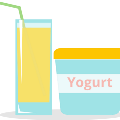 | Simply blend low-fat milk or yogurt with your favourite fresh or frozen fruits, like bananas, peaches and strawberries. |
Fruit popsicles | Fill popsicle moulds with 100% fruit juice and chunks of real fruit, and freeze them overnight. |
Ready-to-eat vegetables | A bag of baby carrots or cherry tomatoes makes for a ready snack after a quick wash. You can also keep celery sticks, cucumber slices and other cut veggies refrigerated in a container. |
A quick salad | Simply mix a bag of salad greens with baby carrots, cherry tomatoes and corn, for a healthy snack. |
Veggie juice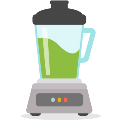 | Blend vegetables like celery and carrots for a refreshing low-calorie drink. |
Shake up the taste
For some, vegetables can be hard to swallow. But don’t worry: there are many ways to make them a tasty delight.
 | Eat veggies with a healthier dip or dressing Capsicums and celery taste great with a low-fat salad dressing. Pick condiments that are labelled HCS as they’re lower in fat and sodium. |
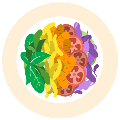 | Make a colourful salad Mix vegetables of different colours to make an appetising and nutritious salad. |
 | Vary cooking methods and flavours Vegetables may taste more flavourful when cooked another way. For example, oven-roasted carrots may please your palate more than boiled ones. Herbs and spices such as garlic, onions, chilli and rosemary can also help boost the flavour. |
 | Hide veggies in sauces and stews This lets the vegetables absorb the meaty flavours, enhancing their taste. |
 | Try different textures Eat an interesting range of crunchy (e.g. apples, cucumbers), smooth (e.g. bananas, eggplants), and juicy (e.g. oranges, tomatoes) textures. |
Shop healthy to eat healthy
Buy fresh produce whenever you can. If not, remember to look for the HCS logo on the packaging to make sure you’re buying healthier food products.
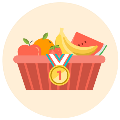 | Choose fruit over juice Juices do not pack as much dietary fibre and vitamins as these are usually found in the peel of the fruit. While dried fruit counts as a nutritious option, be sure to opt for those with less sugar. Look out for the HCS on the packaging, or read the Nutrition Information Panel to help you pick one with lower sugar content. |
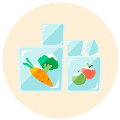 | Shop for frozen fruit and veggies Freshness, flavour and nutrients are retained when fruit and vegetables are flash frozen at extremely cold temperatures. This makes frozen produce a nutritious and longer-lasting alternative to fresh produce. To keep the nutrients intact, add your frozen goodies to your cooking pot without any thawing or soaking. |
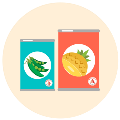 | Buy HCS-labelled canned fruit and veggies Just like frozen fruit and vegetables, canned foods labelled with the HCS are good nutritious alternatives to fresh produce. Choose canned fruit in natural fruit juice rather than syrup, and canned vegetables without added salt. |
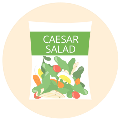 | Stock up on packaged fruit and veggies Pre-cut fruit like melon or pineapple chunks, as well as pre-packed bags of salad greens and other vegetables are convenient alternatives to fresh produce when you want to whip up a quick meal. They also make great healthy snacks on their own. |
Contributed By: Health Promotion Board (HPB)
Fruits and Veggies by Health Promotion Board, www.healthhub.sg.